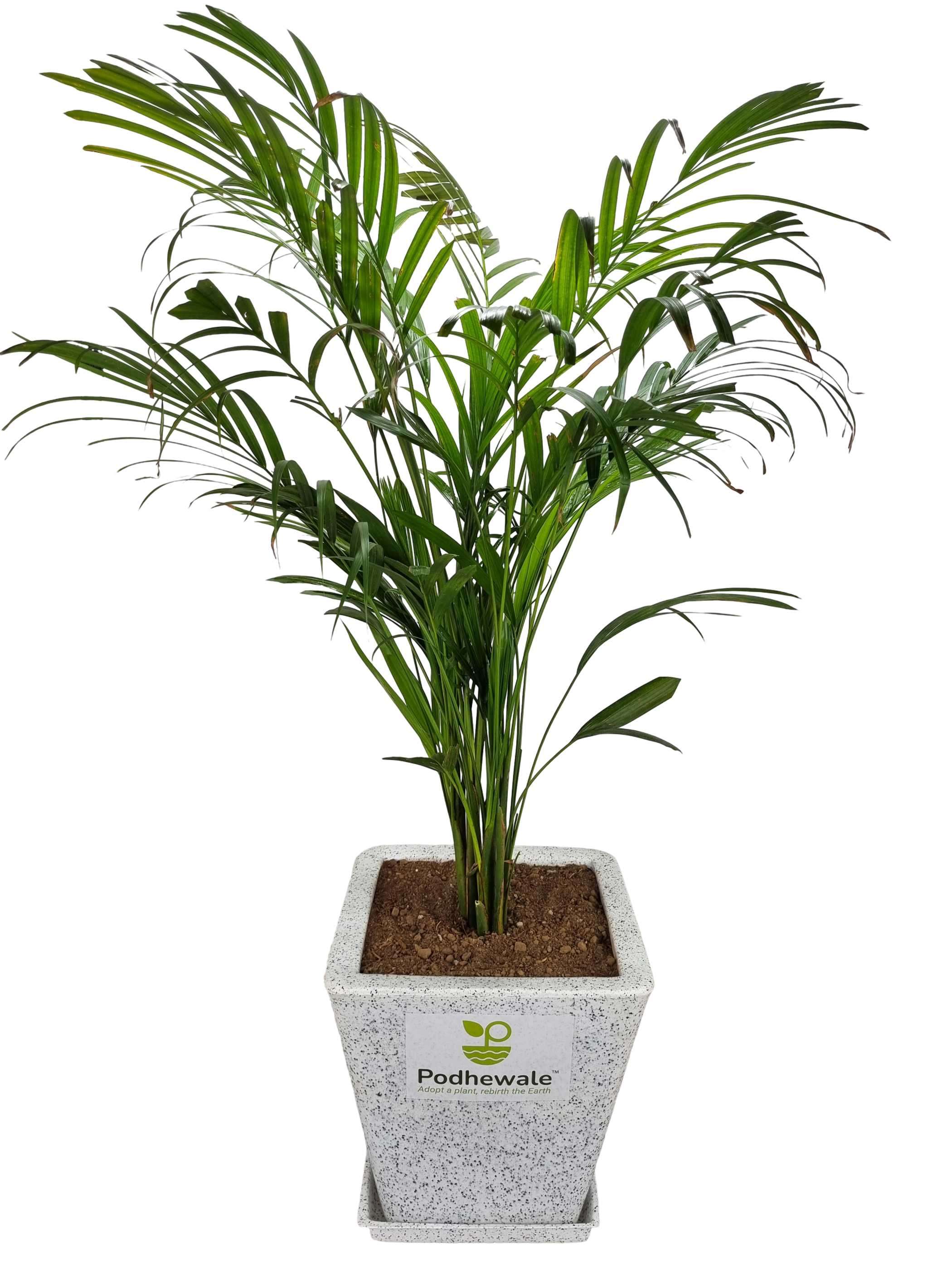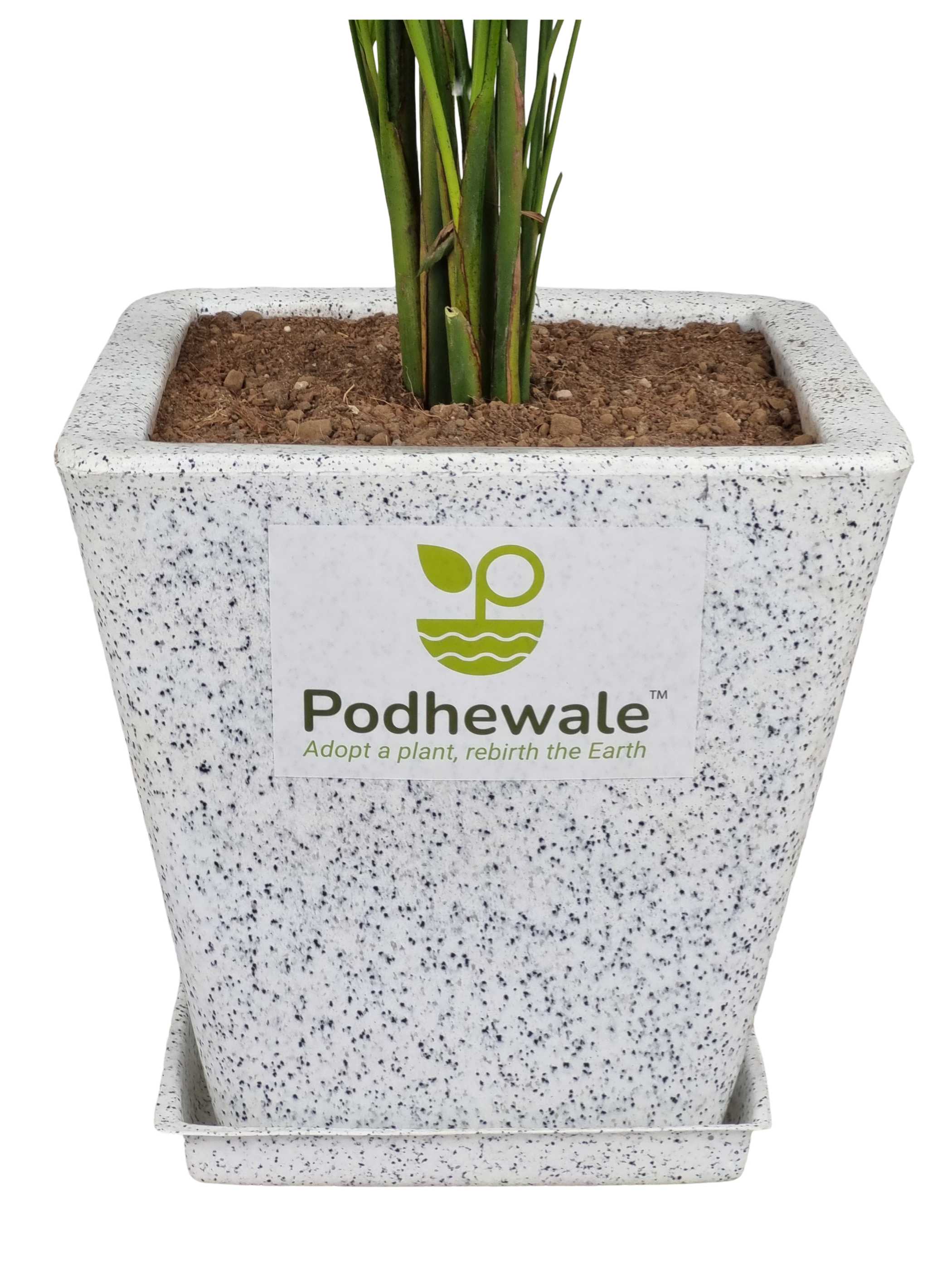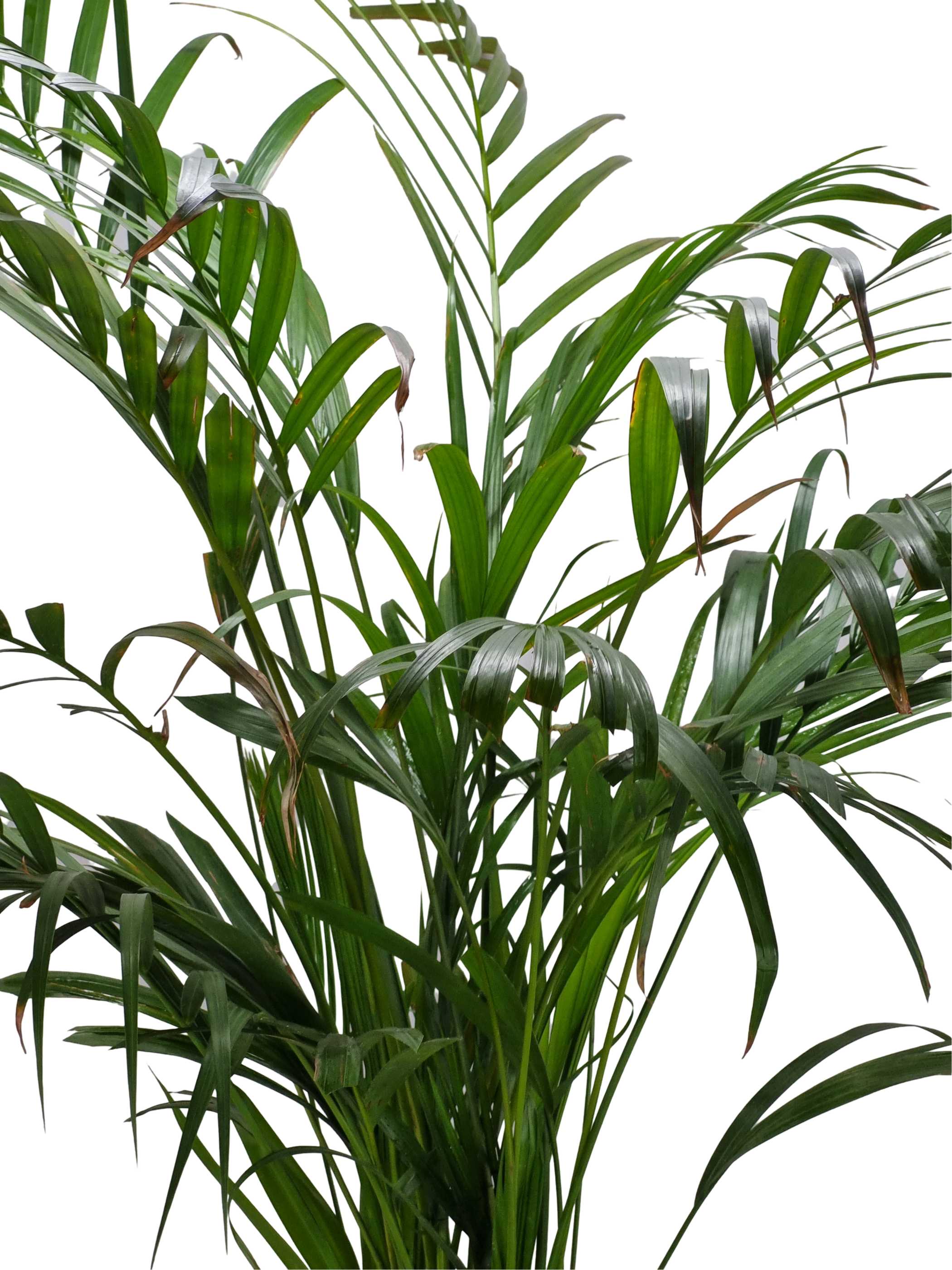Areca Palm (12" White IRI Polymer Stone)
Per Unit Price
Guaranteed Safe Checkout
NoneAreca Palm (12" IRI Polymer Stone)
Looks like origial marble planter
How to Grow and Care for Areca Palm
Here are the main care requirements for growing an areca palm:
Choose a location with bright, full, or filtered sunlight. Plant it in well-draining, slightly acidic soil or special palm potting mix. Water whenever the soil starts to dry out. Fertilize regularly during the spring and summer.Light
Outdoors, these plants like bright, filtered sunlight but they also tolerate full sun. Indoors, areca palms do best with bright light exposure from a south- or west-facing window.
SoilOutdoor specimens do best in rich, slightly acidic soil with a pH of around 6.0 and very good drainage. Amending the soil with sand and peat moss might be necessary to improve porousness and lower soil pH. For potted indoor plants, choose a well-draining, peat-based potting mix, ideally a potting mix specially formulated for palms.
WaterAreca palms tolerate low soil moisture but prosper in moist soil, however, they are sensitive to overwatering and do not tolerate being waterlogged or sitting in a water-saturated potting mix. Let the soil or potting mix dry out slightly between waterings.1
Temperature and HumidityIndoors or outdoors, this plant does best in average temperatures of 70 to 80 degrees F. It will survive if the temperature briefly drops to 32 degrees F but for best growth, it should only be planted in regions where outdoor temperatures don't dip below 50 degrees F.1
When grown as an indoor plant, keep the plant away from cold windows, air conditioners, and heat sources. If you move potted plants outdoors during the summer, be sure to bring them in before temperatures dip below 50 degrees Fahrenheit. Sudden cold bursts often cause dark spots to form on the leaves.
High humidity is essential to keeping an areca palm looking its best. The plant will acclimate to normal indoor humidity. But if the air is too dry, it is common for the leaf tips to turn brown.
FertilizerThe areca palm is a heavy feeder that requires fertilizing from spring to early fall. For outdoor plants, use a slow-release fertilizer high in nitrogen and potassium or a special palm food. Follow the label instructions for amounts and frequency. Do not feed it during the late fall and winter when the plant is dormant.
PruningThese palms don't need much pruning or trimming. The areca palm is self-cleaning, which means it typically will shed its brown fronds on its own. Wait to remove any dying fronds until they are mostly brown, as they still play a role in photosynthesis.
Propagating Areca PalmFor home gardeners, propagating areca palm by root division is the most feasible method. Starting areca palms from seed is the way the palms are propagated in the nursery industry but it is a lengthy process and involves steps not recommended for home gardeners, such as soaking viable seeds in a solution of hot sulfuric acid to improve germination.
Root division can be done at any time during the year, but the plant will be its strongest in the spring. Here’s how to divide a potted areca palm by root division:
Choose a mature plant with multiple stems. Water well the day before dividing to loosen up the roots from the soil. Remove the palm from its pot by patting the sides of the container to loosen the root ball. Shake soil from the roots. Rinse soil from roots to see the roots that belong to each stem. Choose four to five stems and, with a sharp knife, cut them away from the parent. Gently place divided stems together in a pot with a two-to-one mixture of regular potting soil and coarse sand. Place the pot in bright and indirect light (not direct sun) and keep the soil moist but not soggy.





